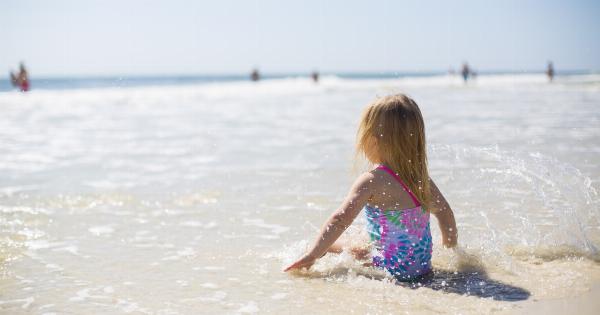Many parents wonder when it is safe to introduce their babies to the ocean for the first time.
While spending time at the beach can be a fun and enjoyable experience for the whole family, it’s important to ensure that your baby’s safety and well-being are the top priority. In this article, we will discuss when it is safe for babies to take a dip in the sea and what precautions parents should take to protect their little ones.
Age and Development
The age at which it is safe for babies to go in the sea can vary depending on their individual development. Pediatricians generally recommend waiting until a baby is at least six months old before introducing them to the ocean.
At this age, babies’ immune systems are stronger, and they have better head and neck control, making it safer for them to be in the water.
It’s important to note that every baby is different, and some may be ready to take a dip in the sea earlier than others.
If you’re unsure, it’s always best to consult with your child’s pediatrician to ensure that they are developmentally ready.
Water Temperature
The temperature of the water is another crucial factor to consider when deciding if it is safe for your baby to go in the sea. The ideal water temperature for babies is around 85°F (29°C).
Water that is too cold can be dangerous and lead to hypothermia, especially for young infants who have difficulty regulating their body temperature.
Before taking your baby into the sea, use a thermometer to check the water temperature. Additionally, it’s essential to monitor your baby closely for signs of discomfort or cold stress while in the water.
If your baby seems too cold or their lips turn blue, it’s time to get them out of the sea and warm them up.
Sun Protection
One of the most vital aspects of taking a baby to the beach is sun protection. Babies have delicate and sensitive skin that is more susceptible to sunburn and long-term damage from harmful UV rays.
It is crucial to protect your baby’s skin from the sun while enjoying a day at the beach.
Here are some sun safety tips for babies:.
1. Keep babies under six months out of direct sunlight: Babies under six months should be kept out of direct sunlight as much as possible. Their skin is highly sensitive and not yet ready to handle prolonged sun exposure.
2. Use sunscreen: For babies over six months, apply a broad-spectrum sunscreen with a sun protection factor (SPF) of at least 30 to all exposed areas of skin.
Reapply every two hours or more frequently if your baby is in and out of the water.
3. Dress your baby in protective clothing: Choose lightweight and breathable clothing for your baby that covers as much skin as possible. Consider using hats with wide brims and sunglasses to protect their face and eyes.
Water Safety
When taking your baby to the sea, it is essential to prioritize water safety. Even shallow and calm waters can pose risks to infants. Here are some water safety tips to keep in mind:.
1. Never leave your baby unattended: Always stay within arm’s reach of your baby while they are in or near the water. It only takes a few seconds for an accident to occur, so constant supervision is essential.
2. Be cautious of waves: Waves can be unpredictable and powerful. Even small waves can knock over a baby or cause them to lose balance. Stay vigilant and ensure that your baby is at a safe distance from breaking waves.
3. Use flotation devices: If you plan on taking your baby into deeper waters or if they are not comfortable in the water yet, consider using a US Coast Guard-approved flotation device.
However, it’s crucial to remember that these devices are not a substitute for adult supervision.
Introducing Babies Gradually
For babies who are experiencing the sea for the first time, it’s a good idea to introduce them to the water gradually. Some babies may be apprehensive or frightened by the new experience. Here are a few steps to help make the transition smoother:.
1. Start with shallow water: Begin by letting your baby sit or crawl in shallow water where they can touch the bottom. This helps them get accustomed to the feeling of water before venturing deeper.
2. Hold your baby securely: While in the water, hold your baby securely in your arms or use a flotation device for added support. This will help your little one feel safe and secure as they explore the new environment.
3. Observe their reactions: Pay attention to your baby’s reactions and body language. If they seem uncomfortable or distressed, don’t force them to stay in the water. Give them time to adjust at their own pace.
Conclusion
Introducing babies to the sea can be a delightful experience, but it’s crucial to prioritize their safety and well-being. Wait until your baby is at least six months old and consult with their pediatrician before taking them into the sea.
Pay attention to the water temperature, protect your baby’s delicate skin from the sun, and ensure that you practice water safety at all times. By taking these precautions and introducing your baby to the sea gradually, you can create wonderful beach memories while keeping your little one safe.




























